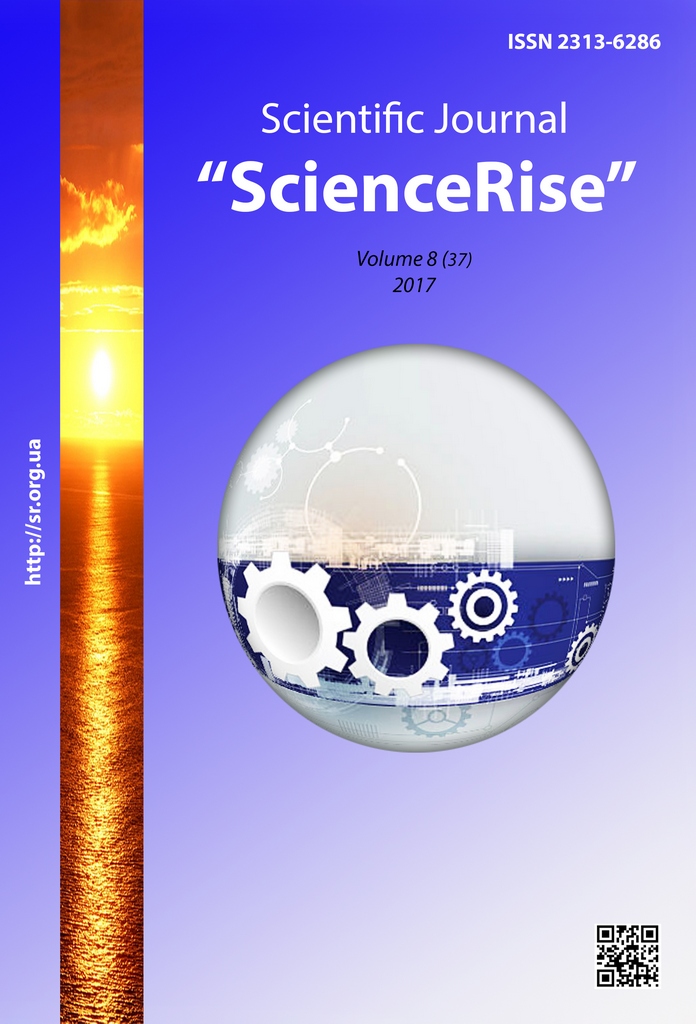Синтез номограммы для расчета субоптимального химического состава конструкционного чугуна на основе параметрического описания поверхности отклика предела прочности
DOI:
https://doi.org/10.15587/2313-8416.2017.109175Słowa kluczowe:
конструкционный чугун, субоптимальный химический состав, уравнение регрессии, стационарная область, ридж-анализ, номограммаAbstrakt
На основе математической модели, описывающей влияние углерода (С) и углеродного эквивалента (Сэкв) на предел прочности на растяжение (σв) конструкционного чугуна, выполнено параметрическое описание поверхности отклика σв=σв(С, СЭКВ). Показано, что для рассмотренной модели в виде уравнения регрессии применение ридж-анализа позволяет найти множество субоптимальных значений входных переменных (С, СЭКВ), обеспечивающих получение заданных марок конструкционного чугуна. Графическое представление таких множеств формирует номограмму для расчета субоптимального химического состава конструкционного чугуна
Bibliografia
Glinkov, G. M., Makovskiy, V. A., Lotman, S. L., Shapirovskiy, M. R. (1986). Proektirovanie sistem kontrolya i avtomaticheskogo regulirovaniya metallurgicheskih protsessov. Moscow: Metallurgiya, 352.
Demin, D. A., Pelikh, V. F., Ponomarenko, O. I. (1995). Optimization of the method of adjustment of chemical composition of flake graphite iron. Litejnoe Proizvodstvo, 7-8, 42–43.
Demin, D. A., Pelikh, V. F., Ponomarenko, O. I. (1998). Complex alloying of grey cast iron. Litejnoe Proizvodstvo, 10, 18–19.
Mohanad, M. K., Kostyk, V., Demin, D., Kostyk, K. (2016). Modeling of the case depth and surface hardness of steel during ion nitriding. Eastern-European Journal of Enterprise Technologies, 2 (5 (80)), 45–49. doi: 10.15587/1729-4061.2016.65454
Nosenko, T. I., Lysenko, T. V., Stanovskij, A. L. (2008). Adaptivnoe avtomatizirovannoe sinhroniziruyushchee proektirovanie sistemy "otlivka-peschanaya forma" NTI. Zbirnyk naukovykh prats' Odes'koyi natsional'noyi mors'koyi akademiyi, 13, 82–88.
Kostrova, G. V., Lysenko, T. V., Bondar, A. A. (2009). Metody samosinhronizacii dinamicheskih processov SAPR litejnogo proizvodstva KGV. Trudy Odesskogo politekhnicheskogo universiteta, 2 (32), 7–10.
Hrychikov, V. E., Koteshov, N. P. (1994). Vliyanie kombinirovannoy kokil'no-peschanoy liteynoy formy na zatverdevanie i formirovanie makrostruktury v krupnih otlivkah iz vysokoprochnogo chuguna. Liteynoe proizvodstvo, 12, 12.
Hrychikov, V. E. (1997). K voprosu obrazovaniya sharovidnogo grafita pri modifitsirovanii chuguna magniem. Liteynoe proizvodstvo, 2, 5–7.
Kosyachkov, V. A., Fesenko, M. A., Denisenko, D. V. (2004). Perspektivy proizvodstva bimetallicheskih otlivok modifitsirovaniem chuguna v liteynoy forme. Protsessy lit'ya, 4, 80–84.
Ivanova, L. A., Dotsenko, P. V., Prokopovich, I. V., Kasprevich, P. V. (1995). Povyshenie germetichnosti otlivok iz serogo chuguna. Puti povysheniya kachestva i ekonomichnosti liteynyh protsessov, 11–13.
Ivanova, L. A., Prokopovich, I. V., Kasprevich, P. V. (1996). Prichiny poteri germetichnosti otlivok iz serogo chuguna. Modelirovanie v prikladnyh nauchnyh issledovaniyah, 25–28.
Ivanova, L. A., Prokopovich, I. V. (1996). Zavisimost' germetichnosti serogo chuguna ot dliny grafitovyh vklyucheniy. Modelirovanie v prikladnyh nauchnyh issledovaniyah, 28–32.
Fesenko, M. A., Fesenko, A. N., Kosyachkov, V. A. (2010). Vnutriformennoe modifitsirovanie dlya polucheniya chugunnyh otlivok s differentsirovannymi strukturoy i svoystvami. Liteynoe proizvodstvo, 1, 7–13.
Fesenko, M. A., Kosyachkov, V. A., Fesenko, A. N. (2006). Issledovanie protsessov vnutriformennoy obrabotki chuguna metodami fizicheskogo modelirovaniya. Vіsnik Donbas'koї derzhavnoї mashinobudіvnoї akademіi, 3 (5), 7–14.
Endo, M., Yanase, K. (2014). Effects of small defects, matrix structures and loading conditions on the fatigue strength of ductile cast irons. Theoretical and Applied Fracture Mechanics, 69, 34–43. doi: 10.1016/j.tafmec.2013.12.005
Cheng, Y., Huang, F., Li, W., Liu, R., Li, G., Wei, J. (2016). Test research on the effects of mechanochemically activated iron tailings on the compressive strength of concrete. Construction and Building Materials, 118, 164–170. doi: 10.1016/j.conbuildmat.2016.05.020
Borsato, T., Berto, F., Ferro, P., Carollo, C. (2016). Effect of in-mould inoculant composition on microstructure and fatigue behaviour of heavy section ductile iron castings. Procedia Structural Integrity, 2, 3150–3157. doi: 10.1016/j.prostr.2016.06.393
Fourlakidis, V., Diószegi, A. (2014). A generic model to predict the ultimate tensile strength in pearlitic lamellar graphite iron. Materials Science and Engineering: A, 618, 161–167. doi: 10.1016/j.msea.2014.08.061
Bai, Y., Luan, Y., Song, N., Kang, X., Li, D., Li, Y. (2012). Chemical Compositions, Microstructure and Mechanical Properties of Roll Core used Ductile Iron in Centrifugal Casting Composite Rolls. Journal of Materials Science & Technology, 28 (9), 853–858. doi: 10.1016/s1005-0302(12)60142-x
Demin, D. (2017). Strength analysis of lamellar graphite cast iron in the «carbon (C) – carbon equivalent (Ceq)» factor space in the range of C = (3,425-3,563) % and Ceq = (4,214-4,372) %. Technology Audit and Production Reserves, 1 (1 (33)), 24–32. doi: 10.15587/2312-8372.2017.93178
Seraya, O. V., Demin, D. A. (2012). Linear Regression Analysis of a Small Sample of Fuzzy Input Data. Journal of Automation and Information Sciences, 44 (7), 34–48. doi: 10.1615/jautomatinfscien.v44.i7.40
Demin, D. A. (2013). Mathematical modeling in the problem of selecting optimal control of obtaining alloys for machine parts in un-certainty conditions. Problems of mechanical engineering, 6, 15–23.
##submission.downloads##
Opublikowane
Numer
Dział
Licencja
Copyright (c) 2017 Dmitriy Demin

Utwór dostępny jest na licencji Creative Commons Uznanie autorstwa 4.0 Międzynarodowe.
Our journal abides by the Creative Commons CC BY copyright rights and permissions for open access journals.
Authors, who are published in this journal, agree to the following conditions:
1. The authors reserve the right to authorship of the work and pass the first publication right of this work to the journal under the terms of a Creative Commons CC BY, which allows others to freely distribute the published research with the obligatory reference to the authors of the original work and the first publication of the work in this journal.
2. The authors have the right to conclude separate supplement agreements that relate to non-exclusive work distribution in the form in which it has been published by the journal (for example, to upload the work to the online storage of the journal or publish it as part of a monograph), provided that the reference to the first publication of the work in this journal is included.

